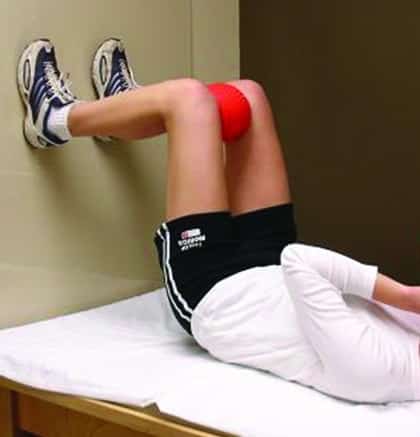In my previous post I wrote about the how the word tight is a useless symptom description. This sensation of “tightness” is due to musculotendinous shortness or stiffness. While shortness is physiological and more difficult to address, excessive stiffness is correctable via movement and exercise.
First it must be understood that a degree of stiffness is acceptable and often desired, specifically within an athletic population. An acceptable amount of stiffness allows athletes to be elastic, generating maximal power with minimal effort. This often what separates great athletes from average joes and is something coaches and clinicians must be sure to keep in mind.
In other words, do not assume that an area with a degree of stiffness must be mobilized or stretched, as these athletes rely on their stiffness (Remember, do no harm!).
However problems occur when stiffness is excessive, altering alignment and leading to dysfunction. The most effective plan of care is achieving tissue mobility through movement.
Tissues often become stiff due to poor stability, motor control and movement patterning. A lack of stability results in musculotendinous structures becoming stiff, providing the stability that is not present from the appropriate areas. As described in my previous post, the hamstrings become stiff in response to a lack of proximal stability at the lumbo-pelvic region. The pelvis may migrate into an anterior pelvic tilt due to poor pillar stability resulting in an unstable proximal hamstring attachment at the ischial tuberosity. Therefore the central nervous system increases hamstring tone as a protective response in an attempt to provide stability through stiffness.
Traditional stretching will not address this issue as the cause of excessive stiffness is due to a lack of pillar stability/motor control.
The most effective method in treating this issue is achieving mobility through movement. For proper movement patterning to possible, the body must be able to dynamically stabilize through the available range of motion. Therefore the smaller, instrinsic musculature will function as it designed, activating before the prime movers to provide proximal stability, enabling the larger muscle groups to do their jobs and generate the force for movement.
For shoulder movement to be performed appropriately the trunk (transverse abdominus, multifidi, pelvic floor musculature, etc.), scapulo-thoracic, and rotator cuff musculature must activate to create a fixed point (punctum fixum for you DNS and PRI practitioners) allowing for the deltoids, pectorals and/or lattisimus dorsi to generate movement.
An athlete may have excessive hamstring stiffness in response to poor pillar stability and dysfunctional hip extension patterning (think sprinting). Similar to the previous example, the trunk musculature should fire first, providing a stable base for the lower extremity to drive off of. With a stable proximal attachment, hamstring tone is decreased allowing for appropriate gluteal activation to generate hip extension. Therefore hamstring dominance is decreased, as well as further hamstring stiffness related to overuse.
Correcting one’s dysfunctional movement patterns requires appropriate joint stability and associated muscular tension. Therefore teaching an athlete to properly squat, lunge, roll, etc. normalizes his/her subjective complaints of “tightness.” The athlete is forced to dynamically stabilize through the range of motion addressed in the pattern, thus will keep any mobility achieved during the pattern.
For these reasons, I rarely perform any static stretching with any of my athletes/patients. The majority of manual treatment techniques that I perform involve Dry Needling or ASTYM to normalize muscular tone, desensitize nerve endings, decrease swelling and/or stimulate heeling. Exercises then follow these manual techniques allowing the true cause of the tissue dysfunction to be addressed.
I may perform a Dry Needling treatment on an athlete’s glenohumeral joint capsule or any associated musculature that is contributing to mobility restrictions or abnormal joint arthrokinematics before following it with closed chain exercises such as downward facing dog or side sits to bear. This results in proper scapulothoracic and glenohumeral muscular co-contraction to be achieved, resulting in maximal glenohumeral joint congruency for maximal weight bearing/functional capacity.
Therefore next time you are feeling “tight” or hear an athlete/patient report these complaints think movement, not stretching!

